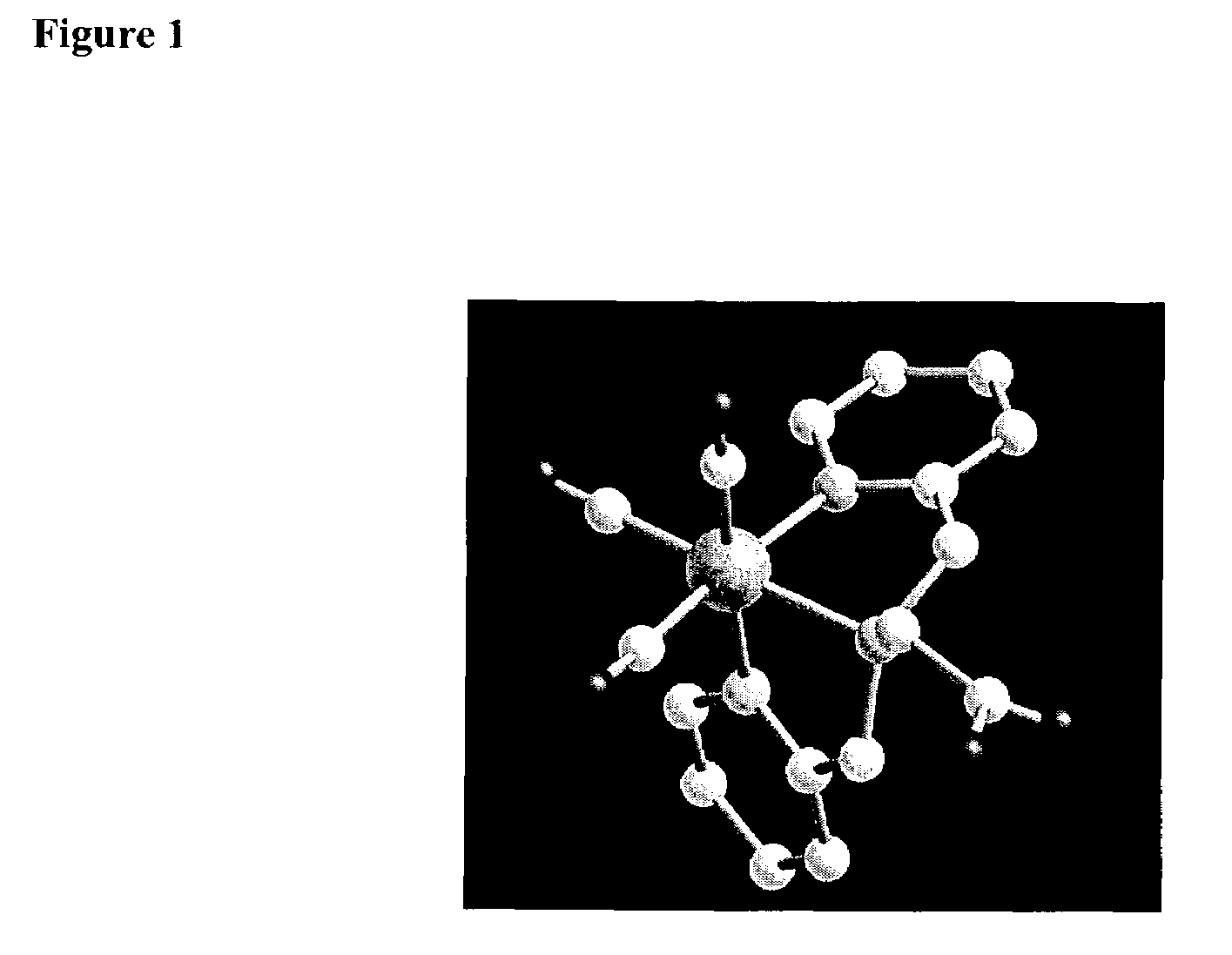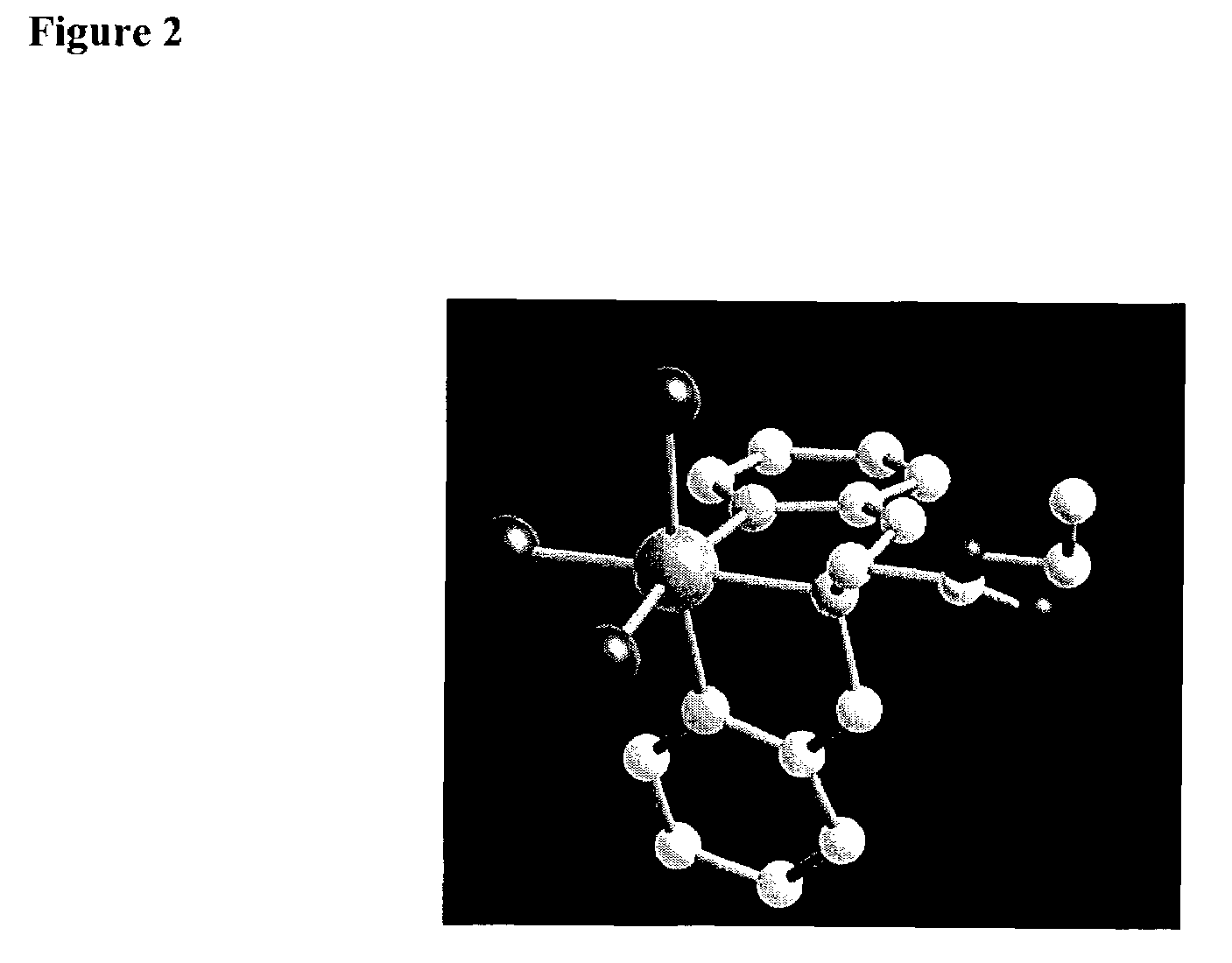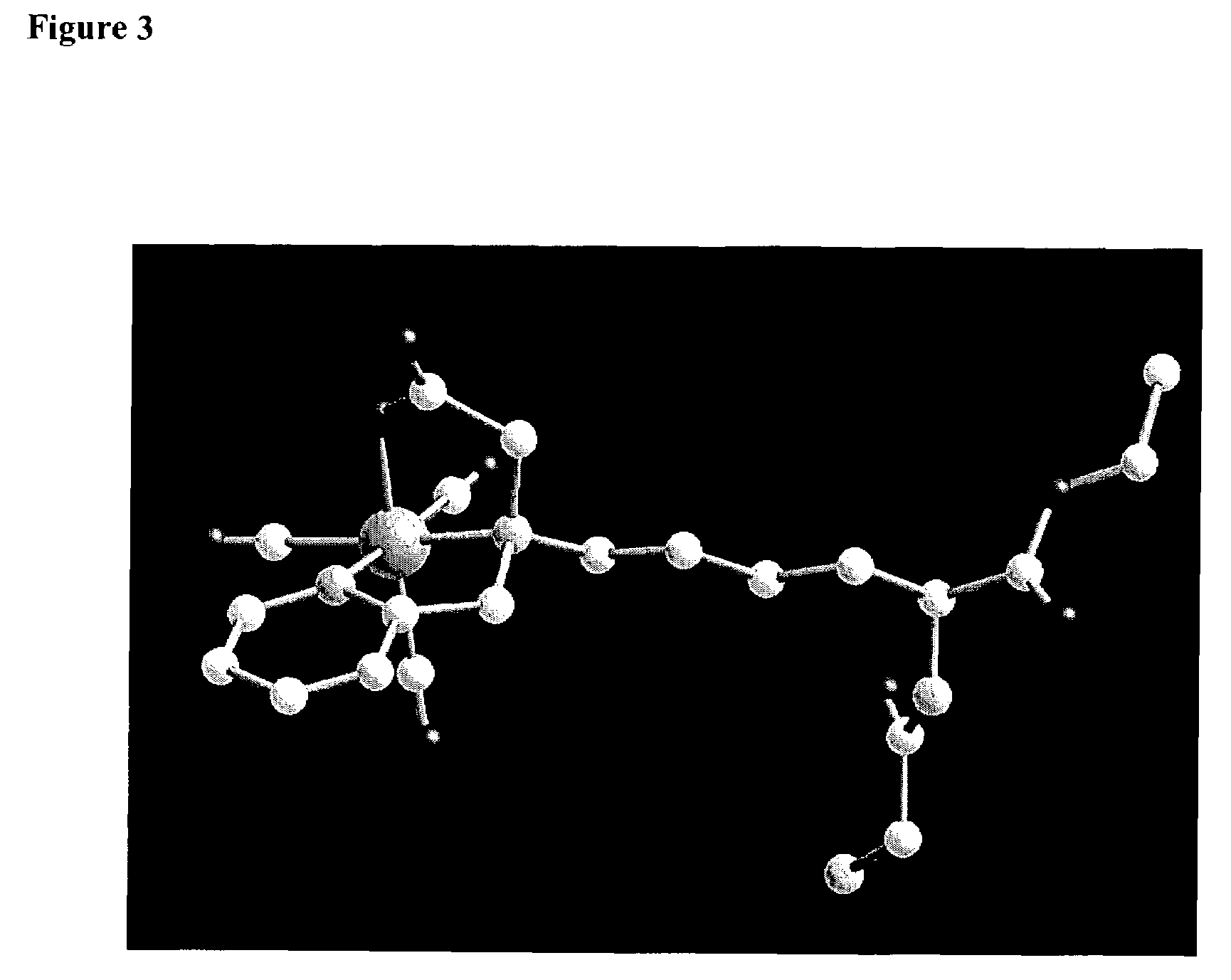Technetium-dipyridine complexes, and methods of use thereof
a technology of dipyridine and complexes, which is applied in the direction of peptides, group 5/15 element organic compounds, and group 4/14 element organic compounds, etc., can solve the problems of not providing metabolic information of the state of the tissue within the region of apparently low perfusion, many radionuclides are less than ideal for routine clinical use, and the rapid growth of the tumor is not matched
- Summary
- Abstract
- Description
- Claims
- Application Information
AI Technical Summary
Benefits of technology
Problems solved by technology
Method used
Image
Examples
example 1
Synthesis of (C5H4NCH2)2NH
[0249]In a 100 mL round bottomed flask was placed 2-aminomethylpyridine (2.50 g, 0.023 moles). The system was placed under nitrogen. The solid was dissolved in 20 mL of acetonitrile followed by the addition of 7 mL of triethylamine. Next the 2-bromomethylpyridine hydrobromide (5.80 g, 0.023 moles) was added. The reaction mixture was allowed to stir for 0.5 hours at 55 C., whereupon the reaction was vacuumed down to residue. The mixture was purified using a large silica column (10% methanol / methylene chloride). 1H NMR (CDCl3, ppm): 2.97 (s, H), 3.98 (s, 4H), 7.15 (m, 2H), 7.28 (m, 2H), 7.65 (m, 2H), 8.55 (m, 2H). Mass Spectroscopy demonstrated the molecular weight to be 199.
example 2
Synthesis of (C5H4NCH2)3N
[0250]In a 100 mL round bottomed flask was placed 2-aminomethylpyridine (2.50 g, 0.023 moles). The system was placed under nitrogen. The solid was dissolved in 20 mL of acetonitrile followed by the addition of 7 mL of triethylamine. Next the 2-bromomethylpyridine hydrobromide (5.80 g, 0.023 moles) was added. The reaction mixture was allowed to stir for 0.5 hours at 55 C., whereupon the reaction was vacuumed down to residue. The mixture was purified using a large silica column (10% methanol / methylene chloride). 1H NMR (CDCl3, ppm): 3.98 (s, 4H), 7.15 (m, 2H), 7.55 (m, 2H), 7.65 (m, 2H), 8.55 (m, 2H). Mass Spectroscopy demonstrated the molecular weight to be 291 (M+1).
example 3
Synthesis of (C5H4NCH2)2NCH3
[0251]In a 100 mL round bottomed flask was placed dipyridinemethylamine DPMA (1.00 g, 5.03 mmoles). The solid was dissolved in 10 mL of acetonitrile followed by the addition of 2 mL of dimethylformamide. Next the methyliodide (0.637 g, 4.52 mmoles) was added. The reaction mixture was allowed to stir for 0.5 hours at room temperature, whereupon the reaction was vacuumed down to residue. The mixture was purified using a large silica column (10% methanol / methylene chloride). 1H NMR (CDCl3, ppm): 2.19 (s, 3H), 3.85 (s, 4H), 7.15 (m, 2H), 7.50 (d, 2H), 7.65 (m, 2H), 8.55 (d, 2H). Mass Spectroscopy demonstrated the molecular weight to be 214 (M+1).
PUM
| Property | Measurement | Unit |
|---|---|---|
| gamma energy | aaaaa | aaaaa |
| time | aaaaa | aaaaa |
| sizes | aaaaa | aaaaa |
Abstract
Description
Claims
Application Information
 Login to View More
Login to View More - R&D
- Intellectual Property
- Life Sciences
- Materials
- Tech Scout
- Unparalleled Data Quality
- Higher Quality Content
- 60% Fewer Hallucinations
Browse by: Latest US Patents, China's latest patents, Technical Efficacy Thesaurus, Application Domain, Technology Topic, Popular Technical Reports.
© 2025 PatSnap. All rights reserved.Legal|Privacy policy|Modern Slavery Act Transparency Statement|Sitemap|About US| Contact US: help@patsnap.com



